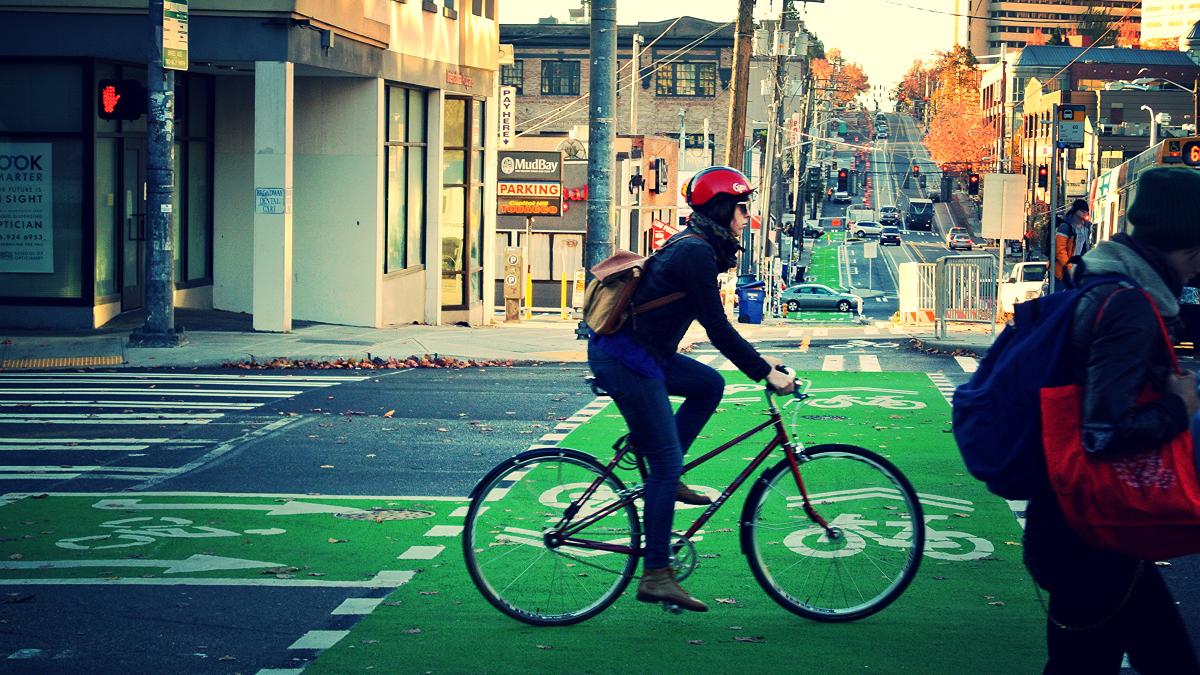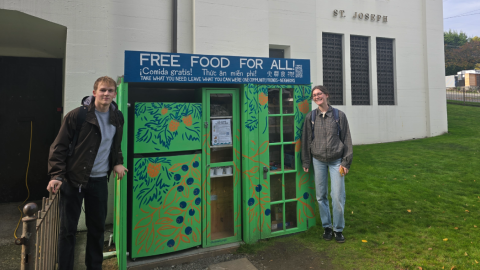Seattle is routinely listed as one of the most walkable and bike-friendly cities in the nation. The city government has committed to Vision Zero, which aims to completely eliminate traffic deaths and serious injuries by 2030, and embarked on a slew of infrastructure projects: expanding the city’s bike network, redesigning high-crash intersections and enhancing crosswalks to protect pedestrians.
Such safety projects sometimes meet opposition from local business owners, who worry that reduced parking and disruption to regular traffic flow will hurt their bottom line.

New research from the University of Washington suggests those worries are unfounded. Published this month in Injury Prevention, an analysis of seven safety projects across Seattle found they had no negative impact on the annual revenues of nearby businesses for three years after construction began. The results could help city officials gather support from local business owners and remove a barrier to fulfilling Seattle’s Vision Zero pledge.
“A walkable area generally encourages business....I think this work has implications that will be useful to policy makers who work on pedestrian safety and livable community issues.”
- Andrew Dannenberg
“Some business owners may be concerned that Vision Zero pedestrian safety projects lead to a trade-off between safety and economic viability. Our research found there is no economic harm in improving safety, and such projects offer the health benefits of reducing injuries,” said study co-author Andrew Dannenberg, a UW affiliate professor in the Department of Environmental & Occupational Health Sciences (DEOHS) and Urban Design and Planning.
The study was led by UW alumnus Daniel Osterhage, who completed the research for concurrent master’s degrees in public health and urban planning and now works at the Bill & Melinda Gates Foundation.
Assessing traffic safety interventions
Researchers identified seven road safety projects of varying types, from the addition of bike lanes and crosswalks to speed limit adjustments and the removal of traffic lanes.
Using revenue data that each Washington business submits to the state, researchers established a baseline of taxable sales for businesses adjacent to each safety project, as well as for businesses in the nearby comparison areas.
In the three years after each safety intervention, researchers found no significant difference in the year-over-year change in revenue of the businesses in the intervention and comparison sites. On average, taxable sales increased in both the intervention and comparison sites over time, and at largely the same rate.
“If there had been a major impact of taking away parking spaces or disrupting traffic leading to a loss of business, you would expect sales to go down in places that had the interventions and not go down in the comparison sites,” Dannenberg said. “In fact, they stayed about the same, within statistical range. The sales data do not suggest any economic harm occurred, in fact there were a few instances where the safety interventions might have even helped sales.”
Creating walkable, business-friendly neighborhoods
Dannenberg, who serves on the Seattle planning commission, believes this work may help facilitate communication between city planners and business interests.
“A walkable environment generally encourages business,” Dannenberg said. “I think this work has implications that will be useful to policy makers who work on pedestrian safety and livable community issues.”
Other co-authors are Jessica Acolin and Paul Fishman of the Department of Health Systems and Population Health in the UW School of Public Health.
Adapted from the original release here.




